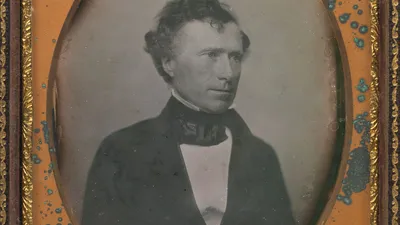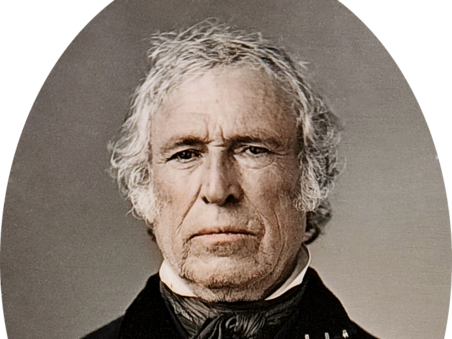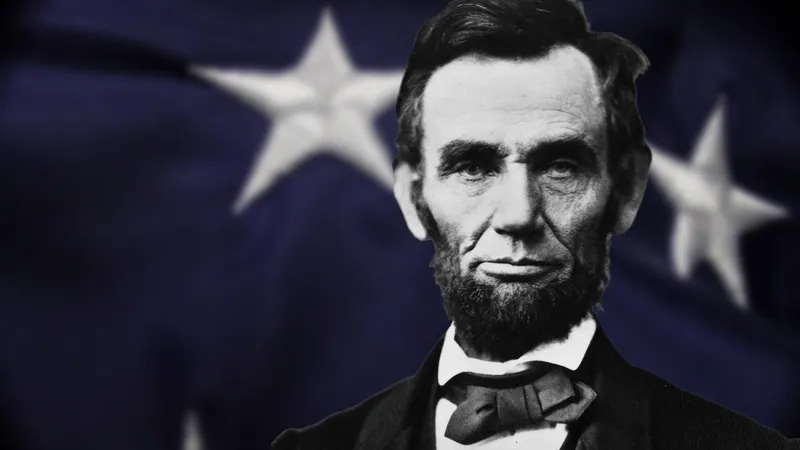
Franklin Pierce: The Presidency Marked by Disunity
mashupch
- 0
mashupch.com – Franklin Pierce’s presidency, serving as the 14th President of the United States from 1853 to 1857, is often remembered as a period marked by disunity and political fragmentation. Emerging in an era when the nation was rapidly transforming—socially, economically, and territorially—Pierce’s time in office was deeply influenced by the sectional tensions surrounding slavery, expansionism, and the waning influence of traditional political institutions. This article delves into the factors that shaped his rise to power, the major challenges of his administration, and the enduring impact of his policies on a divided America.
Early Life and Political Ascent
Understanding Franklin Pierce’s presidency begins with a look at his early life and the factors that shaped his political philosophy.
Early Life and Education
Born on November 23, 1804, in Hillsborough, New Hampshire, Franklin Pierce grew up in a modest, patriotic family steeped in New England values. His upbringing in a region known for its commitment to republican ideals and civic responsibility significantly influenced his worldview. Despite facing personal and financial hardships during his youth, Pierce pursued an education that laid the groundwork for a career in public service. Early exposure to the political debates of his time and the guidance of local leaders helped instill in him a sense of duty that would later define his approach to governance.
Political Rise
Pierce’s ascent in the political arena was both gradual and marked by his ability to appeal to a wide range of Democratic Party constituents. He began his public service career in the New Hampshire state legislature, where he gained invaluable experience in lawmaking and public administration. His effectiveness as a legislator and his moderate political stance earned him a seat in the United States House of Representatives and later in the Senate. His military service during the Mexican-American War further bolstered his public image, portraying him as a patriot willing to serve his country in times of conflict. These experiences ultimately paved the way for his nomination as the Democratic candidate for the presidency in 1852, culminating in a hard-fought election during an era rife with sectional discord.
The Presidency Marked by Disunity
Pierce assumed office at a time when America was grappling with profound internal divisions. His presidency is particularly noted for policies and decisions that inadvertently deepened the nation’s fractures.
The Context of an Evolving Nation
The mid-19th century was a period of significant change in America. Westward expansion, driven by the belief in Manifest Destiny, introduced new territories into the national debate over slavery. The country was increasingly divided between industrial, free-soil interests in the North and agrarian, slave-reliant economies in the South. This transformation redefined political allegiances and regional identities. Pierce’s administration was caught in this conflict, facing the challenge of reconciling economic progress with the moral and legal dilemmas posed by slavery.
The Kansas-Nebraska Act and Sectional Conflict
A defining moment of Pierce’s presidency was his support for the Kansas-Nebraska Act. This controversial legislation allowed the settlers in the Kansas and Nebraska territories to decide whether to permit slavery, effectively repealing the Missouri Compromise that had maintained a precarious balance between free and slave states. The act ignited intense debates and violent conflicts, most notably in the region known as “Bleeding Kansas,” where pro-slavery and anti-slavery factions clashed. Although Pierce viewed the act as a necessary step to facilitate national expansion, it only served to deepen sectional divisions and alienate many Northern Democrats and abolitionists, further fragmenting the nation.
Leadership Challenges and Political Division
Pierce’s leadership style was marked by a tendency to favor compromise and a reliance on the traditional patronage system. However, these approaches proved inadequate in addressing the rapidly escalating political divisions of his time. His inability to effectively mediate between the conflicting interests of Northern moderates and Southern extremists weakened his political position and stoked further disunity within the Democratic Party. The internal strife and infighting during his administration set the stage for a political realignment that would eventually contribute to the emergence of the Republican Party and the looming crisis of the Civil War.
Domestic Policy and Its Impact on National Unity
Beyond the contentious issue of slavery, Franklin Pierce’s domestic policies reveal the complexities of governing a nation divided along economic, regional, and ideological lines.
Judicial Appointments and Political Patronage
Pierce’s use of political patronage in making judicial appointments underscored his commitment to maintaining party loyalty, sometimes at the expense of broader national interests. His selections for key governmental and judicial positions were often based on regional allegiances, which reinforced existing divides rather than bridging them. Critics argued that this reliance on patronage not only compromised the integrity of the judicial system but also fostered a culture of corruption and inefficiency within his administration.
Economic Policies and Their Social Impact
The economic policies of the Pierce administration attempted to balance the interests of both agrarian and industrial stakeholders. As the nation expanded westward, debates over tariffs, infrastructure investments, and federal economic intervention intensified. Pierce’s efforts to modernize certain aspects of the economy were met with resistance from traditionalist factions, while his compromises left neither side fully satisfied. This delicate balancing act, intended to foster economic growth, inadvertently highlighted the disparate needs and priorities of the North and South, contributing to the overall climate of disunity.
Foreign Policy in a Time of Internal Strife
While domestic issues dominated much of his presidency, Franklin Pierce’s foreign policy initiatives also played a role in exacerbating national divisions.
Diplomatic Endeavors and International Relations
On the international stage, Pierce sought to expand American influence and secure national interests abroad. A notable example was the Ostend Manifesto, a document drafted by American diplomats that advocated for the acquisition of Cuba from Spain by any means necessary. This initiative was widely perceived as an attempt to extend slavery into new territories, further intensifying domestic debates. Although his foreign policy aimed to bolster American prestige and economic interests, it was often viewed with suspicion by critics who believed that it served to entrench pro-slavery sentiments at home.
The Role of Foreign Policy in Domestic Disunity
The interplay between foreign policy and domestic politics during Pierce’s tenure illustrates how international ambitions can sometimes worsen internal conflicts. Policies like the Ostend Manifesto were seen not only as diplomatic maneuvers but also as efforts to protect and expand the institution of slavery. This perception fueled opposition among Northern abolitionists and moderate Democrats, further polarizing an already divided nation. As a result, Pierce’s international initiatives contributed to the growing sense of disunity and mistrust within American society.
The Legacy of Franklin Pierce’s Administration
Franklin Pierce’s presidency is a subject of extensive historical debate, with many viewing his administration as a turning point that deepened national divisions and hastened the path toward civil conflict.
Immediate Aftermath and Political Realignment
In the wake of Pierce’s presidency, the Democratic Party experienced significant internal strife. The inability to reconcile the differing interests of its Northern and Southern factions led to a schism that eventually paved the way for the rise of the Republican Party. This political realignment was not solely the result of Pierce’s policies but rather the culmination of decades of growing sectional tension. His support for the Kansas-Nebraska Act, in particular, is often cited as a catalyst for the ideological realignment that would shape the political landscape in the years leading up to the Civil War.
Historical Evaluation and Lessons Learned
Historians continue to debate Franklin Pierce’s legacy, weighing his personal qualities—such as his sincerity and dedication—against the backdrop of significant policy failures. While some argue that he was a leader caught in the tumultuous currents of his time, others contend that his policy choices and leadership style exacerbated the nation’s divisions. The lessons drawn from his presidency highlight the importance of addressing underlying social and regional conflicts before they become irreparable, offering a cautionary tale for leaders facing similar challenges today.
Reflections on National Division and Leadership Failures
The era of Franklin Pierce’s presidency remains a poignant reminder of the perils of disunity in governance. His administration’s failure to effectively bridge the gap between competing regional interests left a legacy of fragmentation that resonated well beyond his time in office. Modern reflections on his tenure emphasize the need for inclusive and forward-thinking leadership—qualities that Pierce, despite his many virtues, struggled to fully embody during one of America’s most critical periods.
Conclusion
Franklin Pierce’s presidency is a complex chapter in American history, defined by a series of decisions and policies that deepened national divisions and set the stage for future conflicts. His support for controversial measures such as the Kansas-Nebraska Act and his reliance on traditional political patronage contributed to an environment of disunity and mistrust. While his personal dedication to public service and his earnest attempt to govern a rapidly changing nation are acknowledged, the long-term impact of his administration underscores the challenges of leading a divided country.
The legacy of Franklin Pierce serves as both a historical lesson and a call to action for contemporary leaders: in times of crisis, addressing underlying societal fractures with comprehensive and inclusive policies is essential to maintaining national unity. As America continues to navigate its own internal divisions, the story of Pierce’s presidency remains a reminder of the critical importance of visionary leadership in overcoming challenges and forging a cohesive national identity.


